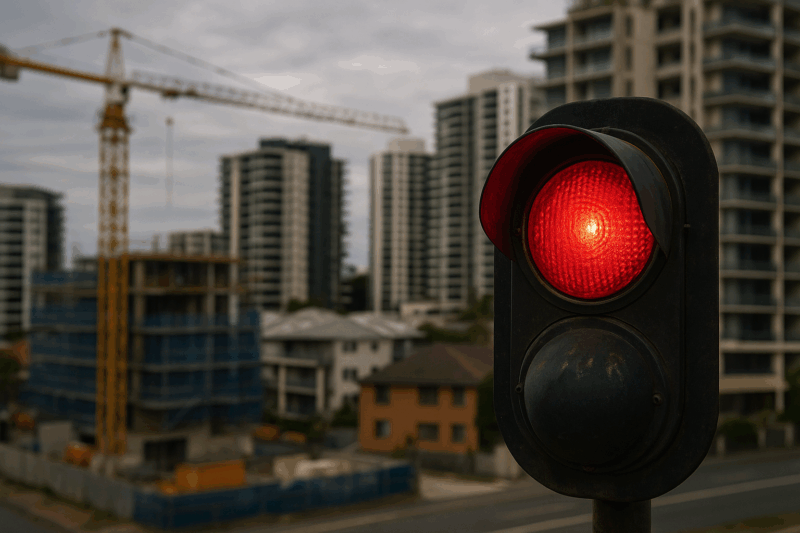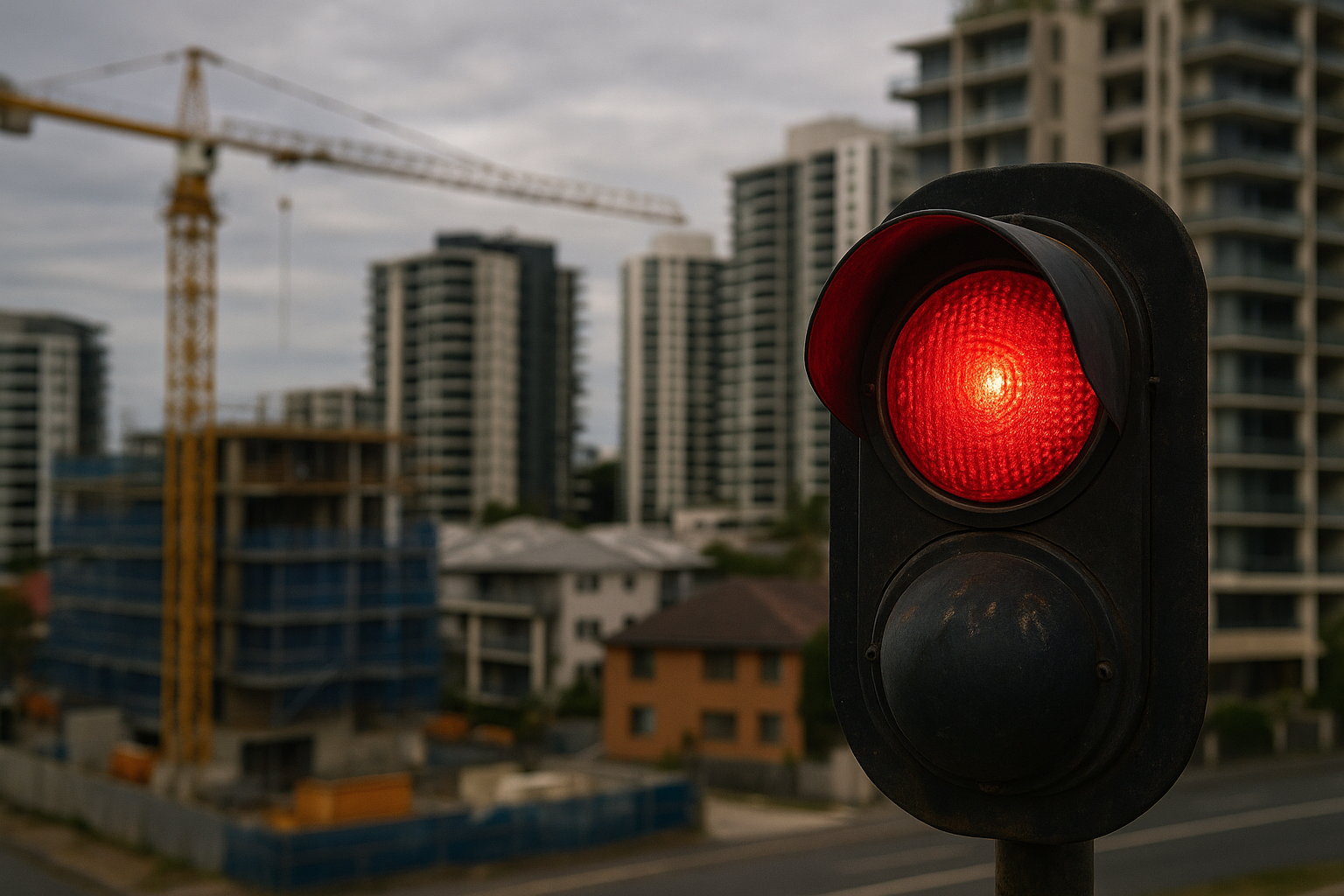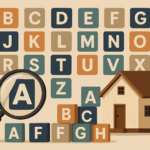
Key takeaways
Total dwelling approvals dropped 6% in August to 14,744, continuing a post-June slowdown. Apartment approvals plunged 33.4%, reaching one of the lowest levels in a year.
Higher-density housing, apartments and townhouses saw the steepest declines, with just 2,704 apartments approved nationally and townhouse approvals down 19.1%. This is a major concern given the need for more urban housing.
Australia’s plan to build 1.2 million homes by 2029 is now at risk. The slowdown highlights a growing gap between government ambition and the industry’s ability to deliver.
High construction costs, labour shortages, complex approvals, and taxes are creating a perfect storm for developers, stalling new projects and pushing up housing prices and rents.
States are introducing measures to boost density like NSW’s finance guarantee, ACT’s rezoning, and Victoria’s fast-tracked townhouse plans but without deeper reform, the supply pipeline will keep shrinking.
Australia’s housing market just got another warning signal, and it’s one we can’t afford to ignore.
While property prices are rising and demand remains strong, new housing approvals are falling sharply, hinting at growing pressure in an already stretched housing system.
According to the latest Australian Bureau of Statistics (ABS) figures, total dwelling approvals dropped 6% in August to 14,744 homes, continuing the slowdown that began after June’s record high.
But here’s where things get concerning — approvals for apartments plunged 33.4% to just 2,704 dwellings, marking the second-lowest level in the past year.
Of those, only 527 were in New South Wales and 342 in Victoria, despite those states accounting for the bulk of Australia’s population growth.
Townhouses didn’t fare much better, falling 19.1%, while detached house approvals slipped 2.6%.
The downturn was most pronounced in Victoria (-11.8%), NSW (-11.4%), South Australia (-10%), and Western Australia (-7.3%).
Only Tasmania (+14.4%) and Queensland (+3.7%) recorded increases, small bright spots in an otherwise gloomy picture.

A widening gap between ambition and reality
The Federal Government’s National Housing Accord aims to build 1.2 million new homes by mid-2029, but at the current rate, we’re nowhere near on track.
So this isn’t just a short-term blip; it’s part of a worrying trend.
The decline in building approvals shows that while policy ambitions are bold, the industry’s ability to deliver new supply is being hampered by real-world challenges.
These include high construction costs, labour shortages, low productivity, and slow planning systems.
Together, they’re making it harder for developers to get projects off the ground, especially in the higher-density segment where approvals have fallen the most.
And that’s critical, because if we can’t build enough apartments, townhouses, and medium-density homes, we simply won’t meet the housing needs of our growing population.
The density dilemma
Australia has long been obsessed with the quarter-acre dream, but our future lies in building up, not just out.
Higher-density living, apartments, terraces, and townhouses, is essential if we’re going to house people affordably in locations close to jobs, transport, and lifestyle amenities.
But with approvals for this type of housing collapsing, the pipeline of future supply is drying up.
Developers are finding projects increasingly unviable due to cost blowouts and red tape, while financiers are hesitant to fund projects without sufficient pre-sales.
That’s why several state governments are now experimenting with initiatives to help unlock construction:
-
NSW has launched a Pre-Sale Finance Guarantee Program, allowing the government to step in and purchase off-the-plan homes to help developers secure finance faster.
-
The ACT is pushing rezoning for medium-density housing along light rail corridors, potentially adding up to 1,000 new homes.
-
Victoria is fast-tracking planning approvals and positioning itself as the “townhouse capital” of Australia to encourage infill development.
These reforms are welcome, but they’re only scratching the surface of what’s needed to close the supply gap.
What it means for the market
Falling approvals today are the shortages of tomorrow.
With fewer homes entering the pipeline, we’ll continue to see upward pressure on prices and rents.
Investors will benefit from the imbalance between supply and demand, but for tenants and first-home buyers, conditions will get tougher.
It also reinforces what I’ve been saying for years; we don’t have a demand problem, we have a supply problem. Australia’s strong population growth, driven by migration, isn’t being matched by new construction.
Unless governments and industry work together to streamline planning, reduce taxes, and improve development viability, this trend will continue, and the dream of housing affordability will drift even further away.
The bottom line
The data doesn’t lie, Australia’s building approvals are flashing red.
If we don’t fix the systemic issues constraining housing delivery, we’ll face deeper affordability challenges, sharper rent rises, and even greater social inequality.
It’s time for real action, coordinated policy, faster planning, and smarter density.
Because without it, that “flashing red light” could soon turn into a full-blown housing emergency.













